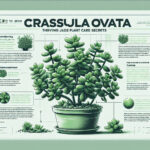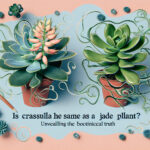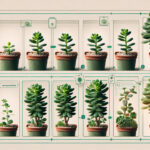Introduction to Crassula and Jade Plants
Imagine a pair of lush, resilient succulents that not only jazz up your living space but also ask very little of you in return. Enter the Crassula and Jade Plants – two stars of the succulent world, each claiming their fame as the go-to green companion for enthusiasts ranging from the busy office worker to the meticulous gardener. Like superhero cousins, they share a family resemblance but boast unique superpowers that set them apart.
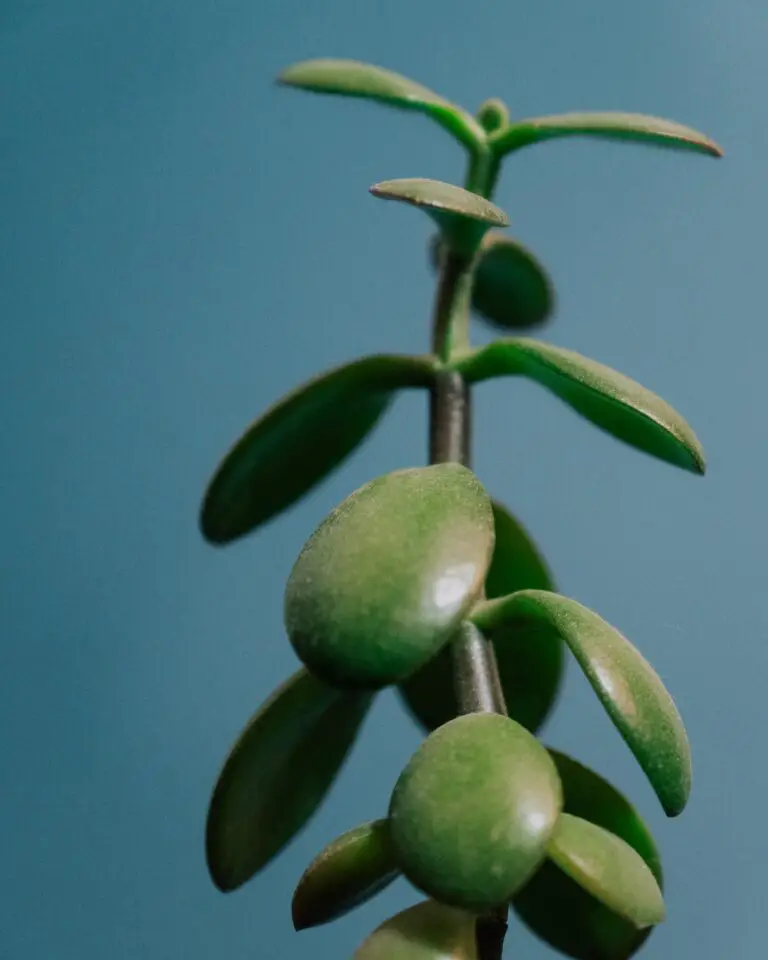
Equally at home perched on a sunny windowsill or nestled among the rocks in a drought-tolerant landscape, these plants are popular for a reason. Crassula, often seen in an array of shapes and textures, brings an architect’s precision to your home with its orderly patterns. Meanwhile, the glossy, plump leaves of the Jade Plant evoke a sense of prosperity and have made it a traditional gift symbolizing wealth and good fortune.
Fascination with these succulents isn’t just a trend; it’s a global phenomenon. With their easy-care and diverse varieties, they suit plant lovers of all stripes. Whether you’ve spotted a Crassula ‘Hobbit’ with its whimsical, tubular leaves or admired a robust Jade Plant proudly displayed at a friend’s housewarming, you’ve likely encountered the charm of these horticultural gems. To dive deeper into the subtle yet intriguing differences between them, let’s explore the array of species and traits that Crassula and Jade Plants bring to the table.
Defining Crassula and Jade Plant Varieties
Enter the verdant world of succulents, where Crassula and Jade Plants stand out like timeless classics in a botanical symphony. Let’s demystify these succulent siblings and shed light on their emerald essences. Although they share a family tree in the broad and diverse Crassulaceae lineage, Crassula and Jade Plants are more like cousins than twins. The variety within their family is as rich and intricate as a tapestry, with each species weaving in its unique thread.
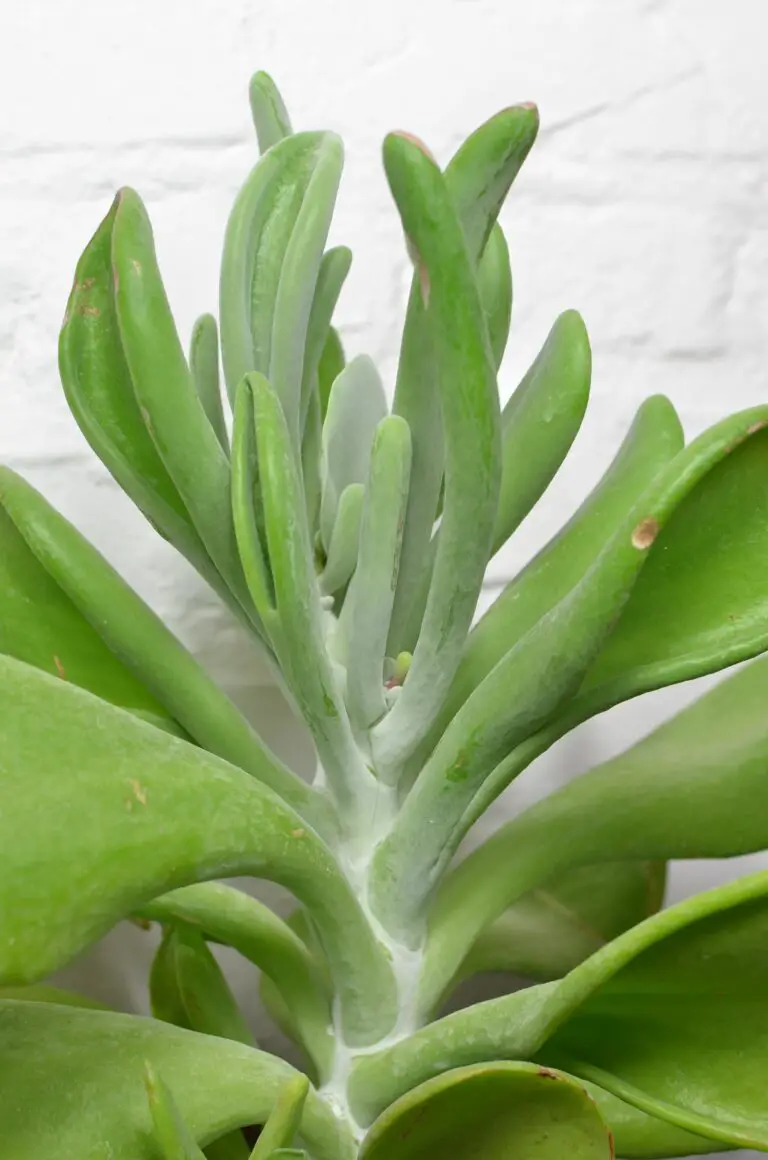
Imagine walking into a lush garden, and your eyes catch the riveting forms of Crassula—compact, often small with a kaleidoscope of shapes from tight rosettes to rippling waves of leaves. Unpack their botanical suitcase, and you’ll find a wide array of species, each with its own passport of features. Crassula ovata, perhaps the genus’s poster child, flaunts plump leaves that could easily be mistaken for a Jade Plant. Yet, here lies the art of distinguishing nuances within the greens.
Turn your gaze to the Jade Plant, and witness a spectacle of resilience and beauty. Officially known as Crassula ovata, it stands proud with its glossy, coin-shaped leaves—symbols of prosperity and good luck. Often gracing the shelves of homes and offices, this succulent variety is just one expression of the Crassula genus. However, it has cast a shadow so vast that ‘Jade Plant’ has become almost synonymous with its name. But don’t be fooled; not all Crassulas are Jades, and not all Jades are Crassula ovata.
To truly appreciate their variety, consider the botanical definitions and classifications that draw the lines between species and varieties. Experts examine traits such as leaf shape, texture, and growth habits. Some Crassula species scale the air with woody stems, while others sprawl as ground covers, each a distinct character in the garden play. Through careful observation, the unique beauty of each species unfurls—a testament to nature’s endless creativity.
As garden enthusiasts or indoor plant connoisseurs, grasping these subtleties translates to a deeper connection with our leafy friends. Choosing a Crassula variety as a companion becomes a personal journey, akin to selecting a piece of art that resonates with your space and spirit. Ultimately, these succulents are not just plants; they are living sculptures, evolving with time and care.
Physical Differences: Leaves, Flowers, and Growth Patterns
Embarking on a green-thumbed adventure, let’s delve into the verdant realm where two popular succulents reside: the Crassula species and the Jade Plant, or Crassula ovata. Despite being cut from the same succulent cloth, these botanical buddies boast distinct features that set them apart in the world of drought-tolerant darlings.
Take it from an enthusiast who has marveled at the astonishing variety of leaf shapes within the Crassula family, a mosaic of textures that ranges from the stack-like architecture of Crassula perforata to the paddle-shaped foliage of Crassula ovata. It’s an eye-opener that these plants can display such diversity! Unlike the universally recognized plump and glossy leaves of the Jade Plant, Crassula species may exhibit round, elongated, or tubular leaves, often adorned with unique patterns or a powdery coating known as farina.
Distinguishing these succulents further are their flamboyant flowers, with the classic Jade Plant producing starry white or pale pink blossoms. In contrast, the Crassula clan can surprise with inflorescences ranging from subtle whites to shocking reds, drawing a kaleidoscope of pollinators into your garden.
When it comes to growth habits, the Jade Plant is typically upright and tree-like, growing with a stately poise that can reach the grandeur of a small shrub. A Crassula, on the other hand, may opt for a more maverick growth pattern—a cascading tapestry for a hanging pot or a sprawling ground cover, gamboling across your garden walkways.
For those with a penchant for verdant vistas, discovering the nuances between the Crassula and Jade Plant becomes a rewarding quest, like that of a gardener turning a snug corner of their home into a lush sanctuary. If you’re wondering how to nurture these leafy lovelies, dive into our insightful guide on Cultivating Crassula Bliss: Tips for Thriving Plants Indoors and transform your abode into a thriving succulent haven.
Now, feast your eyes on this engaging video that plies the succulent seas, navigating the waters of Crassula and Jade Plant identification:
As you embark on your own botanical journey, it’s exhilarating to note that, despite their differences, both Crassula and Jade Plants share a unifying thread—they thrive on the same simple joys: love, sunlight, and the occasional sip of water. So, whether you fancy the robust cheer of a Jade Plant or the intriguing idiosyncrasies of a Crassula, these succulents are poised to enrich your green space and tickle your fancy for nature’s understated extravagance.
Crassula ovata and Its Place Among Jade Plants
Step into the fascinating world of succulents and you’ll hear the name “Jade Plant” thrown around quite a bit, especially when the robust and radiant Crassula ovata enters the conversation. What’s in a name, you ask? Well, get ready for a succulent surprise! When we talk about the Jade Plant, we’re usually referring to the star of the show, Crassula ovata, known for its bright green, coin-shaped leaves that seem to mimic the precious stone jade. But wait – isn’t “Crassula” a separate thing? Let’s untangle this botanical bind!
Imagine you’re walking through a vibrant, lush garden. You stop to admire a compact plant flaunting its glossy leaves that just scream ‘prosperity.’ Congratulations, you’ve just had a rendezvous with the ever-popular Crassula ovata, fondly known as the Jade Plant. Often a symbol of good luck, this plant is not shy about its celebrity status in the plant universe. It’s bold; it’s beautiful; it’s practically the poster child for opulence in the world of flora!
Here’s where it gets juicy – not all Jade Plants hail from the same family tree. That’s right, folks. There’s a mix-up in the green kingdom because several species can masquerade under the illustrious Jade Plant label. However, Crassula ovata takes the crown for being the most iconic representation of this name. It’s a classic case of a singular charismatic species overshadowing its cousins and claiming the title for itself. Oh, the drama!
To put it simply, while all Crassula ovata can be called Jade Plants, not all Jade Plants are Crassula ovata. The moniker has attached itself to Crassula ovata like a snug-fitting glove, and it’s hard to imagine one without the other now. It’s like referring to every adhesive bandage as a Band-Aid – the brand has become synonymous with the product itself. But remember, in the succulent world, labels can be as diverse as the plants themselves.
So next time you overhear someone talking about their beloved Jade Plant, take a moment to appreciate the rich diversity hidden behind those two simple words. And if you need a hand in ensuring that your own Jade Plant, or should we say Crassula ovata, continues to be the jewel of your garden, check out our comprehensive guide to caring for succulent plants. It’s your one-stop-shop for all things green and glorious!
To witness the gloriously plumped leaves, thick stems, and that captivating green hue, behold the king of succulents below. This is not just any plant; it’s a statement – a living, breathing gem that has made its mark in the hearts of plant enthusiasts worldwide.
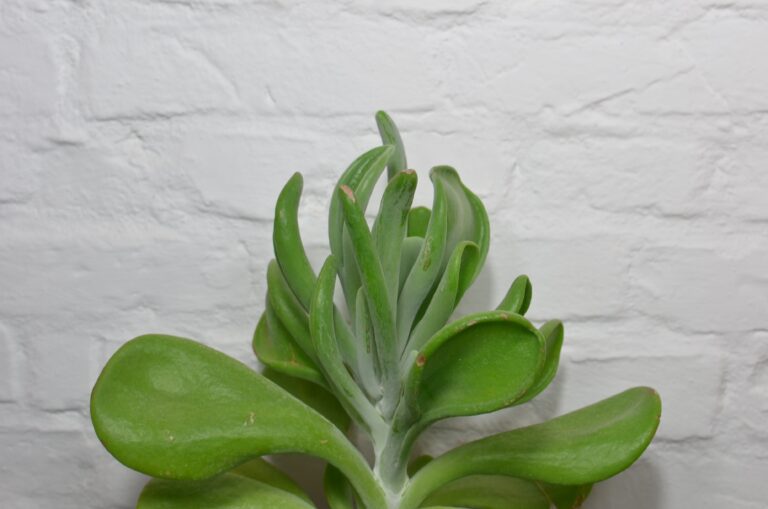
Cultural Significance and Popular Beliefs
When it comes to Crassula and Jade Plants, there’s more than meets the eye. These fascinating succulents are not just decor; they’re steeped in cultural significance and wrapped in a tapestry of folklore. Have you ever wondered why your grandmother swears by the prosperity-bringing powers of a Jade Plant? Or why certain Crassula species are hailed as guardians against negative energy? Let’s dig into these tales and traditions that have permeated various cultures.
In the nooks of Asian cultures, the Jade Plant is often synonymously known as the “Money Plant” or “Lucky Plant.” It’s believed that placing this glossy green gem in the east section of a home or business beckons financial fortune. Talk about going green! It’s not just a myth; this tradition has rooted itself deeply, especially during Chinese New Year, when Jade Plants are gifted as symbols of incoming wealth.
But this green goodness isn’t reserved for the east. In African folklore, Crassula species form part of rituals believed to purify and protect. Some communities plant Crassula hedges around homes as live-in security against mystical harm. Not to mention, tales of these plants being conduits for ancestral spirits remind us that they are considered more family members than flora.
Moving over to the western world, the Victorians, with their elaborate language of flowers, saw the Jade Plant as a token of friendship. This was an ideal gift that symbolized trust, harmony, and the nurturing of relationships. If you received one, you knew you had a steadfast friend indeed. And it’s a gift that keeps on giving, as Jade Plants are known for their longevity, with some living to 100 years!
For those with a green thumb—excuse the pun—ensuring these symbolically rich plants thrive is important. Mastering their care is a craft that promises not only vibrant windowsills but also a perpetuation of traditions. After all, what’s a symbol without its substance?
Not merely the stuff of legends, Crassulas and Jade Plants continue to be popular in modern metaphysical practices. Often seen nestled among crystals and essential oils, these succulents are today’s go-to companions for mediation and mindfulness activities, silently energizing the space with positive vibes.
The cultural importance of these succulent siblings runs deep, and they continue to sprout wonder in the hearts and homes of those who cherish them. To see some lush examples and hear more about their care, take a peek at this informative video:
Though we can’t all travel the world to experience these beliefs firsthand, every Jade Plant on a sill and Crassula in a pot is a leafy link to a rich tapestry of human culture — a green thread weaving through the stories of many peoples and places. It’s remarkable how these succulent secrets connect us across the globe, bridging past to present, whimsy to science, and the garden to the soul.
Care and Maintenance: Ensuring Healthy Growth
Oh, the joys of succulent gardening, where the Crassula and Jade Plant reign supreme! These two botanical buddies may confuse some with their plump leaves and robust natures, but they cater to green thumbs with slightly differing inclinations. Let’s unfurl the scroll of secrets and pave the way for our chlorophyll-laden champions, ensuring they prosper in our little slice of Eden.
Soil Preferences: The Foundation of Vitality
Our leafy pals crave a home that mirrors their natural habitat—a mix worthy of Goldilocks herself, not too dense, not too grainy, just right. While the Crassula prefers its quarters with a side of peat, the Jade Plant yearns for sandy relief, allowing their roots to breathe and shun the dreaded sogginess. Remember, a well-draining soil mix is the cradle of life for these succulent companions.
Watering Schedules: A Balancing Act
Imagine a desert downpour, followed by an age of drought. It’s this cycle of feast and famine that our succulent friends fantasize about. Overzealous watering is the nemesis of the Crassula and Jade Plant alike; they’re survivors that thrive on neglect over nurture. Let the soil dry between watering, making every splash a calculated move—not too often, as root rot lurks in the murky waters of overindulgence.
Light Requirements: Bask in the Glory
The sun’s embrace is food for the soul for these sun-kissed beauties. The Crassula’s leaves yearn to capture those golden rays in a bright room, whereas the Jade Plant often dreams of a life bathed in indirect light, away from the harsh midday sun. Like a lazy cat napping in a cozy sunspot, our succulent friends’ best life is under the gentle but firm hand of bright yet filtered light.
Common Pests: The Unwanted Guests
Even the most majestic gardens wrestle with the minuscule marauders like mealybugs and spider mites. These critters consider succulents, including Crassulas and Jade Plants, the perfect buffet. Arm yourself with insecticidal soap or neem oil—your knights in shining armor—and banish these beasties from your horticultural haven. A keen eye and prompt response are your allies in this enduring battle.
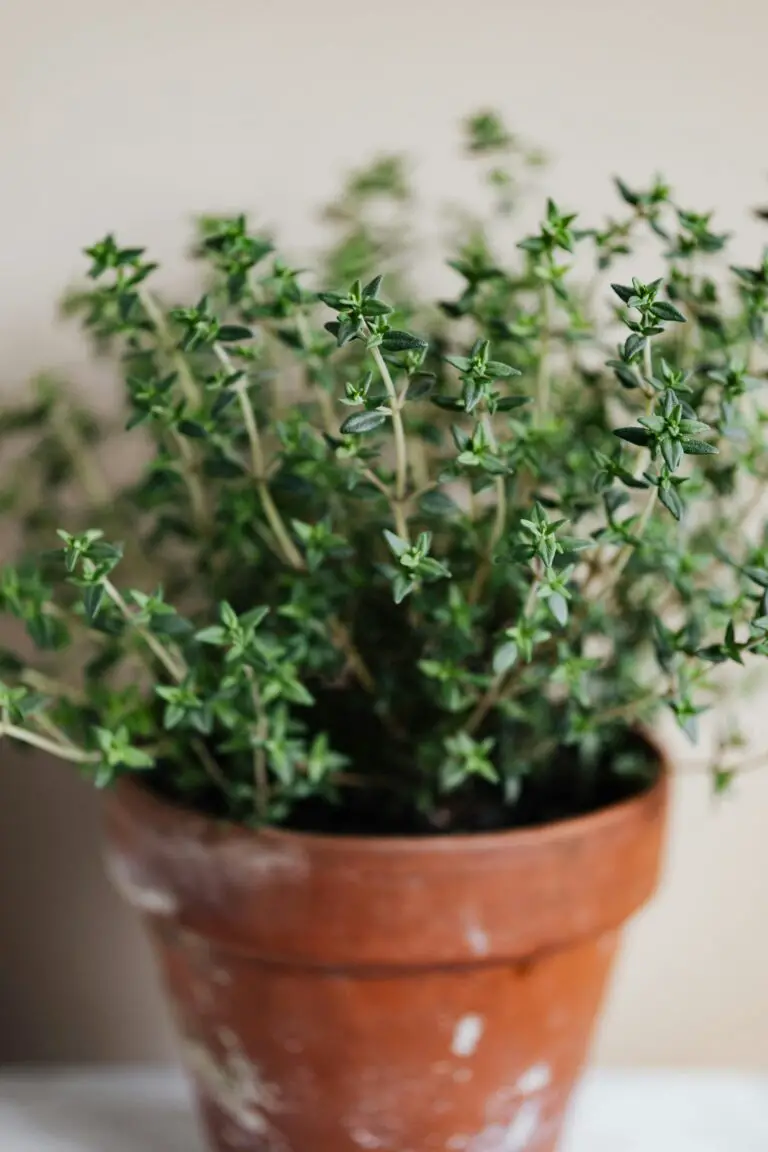
We’ve sown the seeds of wisdom on the care and maintenance of Crassula and Jade Plants. By listening to their silent whispers and acting on their unspoken needs, you’ll ensure these perennial favorites flourish under your watchful eye. May your guardianship reward you with a verdant parade of succulent splendor!
Propagation Techniques for Crassula and Jade Plants
Have you ever wanted to turn one lush succulent into a whole garden of green goodness? It’s easier than you think with Crassula and Jade plants! Whether you’re a seasoned green thumb or just starting out, understanding the propagation techniques for these succulent beauties can make all the difference. Let’s dig into the how-tos and what-fors of multiplying your Crassula and Jade friends.
Crassula: Cuttings and Care
For Crassula plants, propagation is commonly done with cuttings. Here’s the nitty-gritty of it: Snip a healthy leaf or stem section, let it callous over for a few days (this means keeping it in a dry spot away from direct sunlight), then gently plant it in a well-draining cactus mix. I met a Crassula enthusiast once who swore by dipping the cutting in rooting hormone before planting—it can really speed up the process! Within weeks, you’ll notice tiny roots reaching into the soil, and not long after, new growth begins to flourish.
Jade Plant Journeys: Leaf vs Stem
The Jade plant, that gem of a succulent also known as Crassula ovata, has a trick up its leafy sleeve. It can propagate from both stem and leaf cuttings—quite versatile, isn’t it? For stem cuttings, follow the Crassula method, but for leaves, you’ll play the waiting game. Pluck a robust leaf, let it dry, and lay it on top of the soil; roots and a new miniature plant will emerge from where the leaf touches the dirt. Patience is vital—it can take a bit longer compared to stem cuttings, but the anticipation is part of the fun!
It’s worth noting that while both plants are forgiving, success rates can vary due to factors such as the cutting’s health, environmental conditions, and whether you sing to your plants (okay, that last bit might just be an old gardener’s tale, but why not add a dash of tune to your plant care routine?).
Now, for a visual treat, let’s look at a video that perfectly illustrates these techniques:
${‘‘}
By doting on our Crassula and Jade plants with careful cuts, tender love, and a sprinkle of perseverance, we create lush, living legacies. So, go on—propagate with passion and watch as your succulent sanctuary springs to life!
Common Misconceptions and Mistakes to Avoid
Engaging in the world of succulents can be akin to stepping into a lush labyrinth – where each turn introduces a mix of familiar and alien leaf forms. And in the verdant world of Crassula and Jade plants, it’s all too easy to tumble into a tangle of misconceptions. But fret not, green-thumbed enthusiast – we’re here to untwine the common blunders and set the record straight!
Picture this: you’re at your local garden center, eyes gleaming with the anticipation of adding a new succulent to your collection. There, amidst an ocean of green, sits a labeled “Jade Plant.” You scoop it up, only to discover later that your new prized possession is a Crassula ovata ‘Hobbit’, masquerading as the classic Jade Plant (Crassula ovata). Classic mistake! To help prevent such identity mix-ups, remember that while many Crassulas have rounded, glossy leaves much like a traditional Jade Plant, the Jade’s leaves are often plumper and take on a deeper jade-green hue.
Now, let’s navigate the delicate dance of succulent care. Overwatering – the bane of many a plant parent’s existence. Just because these plants can endure drought doesn’t mean they thirst for a daily drink. The rule of thumb for both Crassula and Jade Plants is to allow the soil to dry out completely between waterings. Imagine drenching your plant daily – those plump, lovely leaves would turn into mushy, disgruntled sponges. Yikes!
Another snafu stems from the sunlight saga. Yes, these succulents relish the sun’s embrace, but too much direct light can cause their foliage to scorch, turning a vivid plant into a scorched, sorrowful sight. Striking a balance is key; think bright, indirect light akin to the soft glow of a morning sun, rather than the harsh midday blaze.
Lastly, the pitfall of the pot. A container too large may seem like a grand residence for your succulent, but in reality, it can lead to waterlogged soil and root rot. Small, cozy pots promote healthy root systems and keep moisture levels in check. And don’t forget the drainage holes; they’re vital for these desert dwellers.

So, before you label yourself a succulent savant, ensure you’re privy to these subtle succulent subtleties. Learn from real-life examples and steer clear of these greenery gaffes. Your Crassula and Jade Plant will thank you with a flourish of robust health, bringing that sought-after slice of nature right into your home.
Decorating with Crassula and Jade Plants
If there’s a succulent that can spruce up any corner of your abode with minimal fuss, it’s the Crassula and the venerable Jade plant. These green gems are not only easy on the eyes but are also champions of surviving in corners where other plants might throw in the towel. Let’s dive into some verdant tips to elevate your living spaces with the timeless beauty of these succulents.
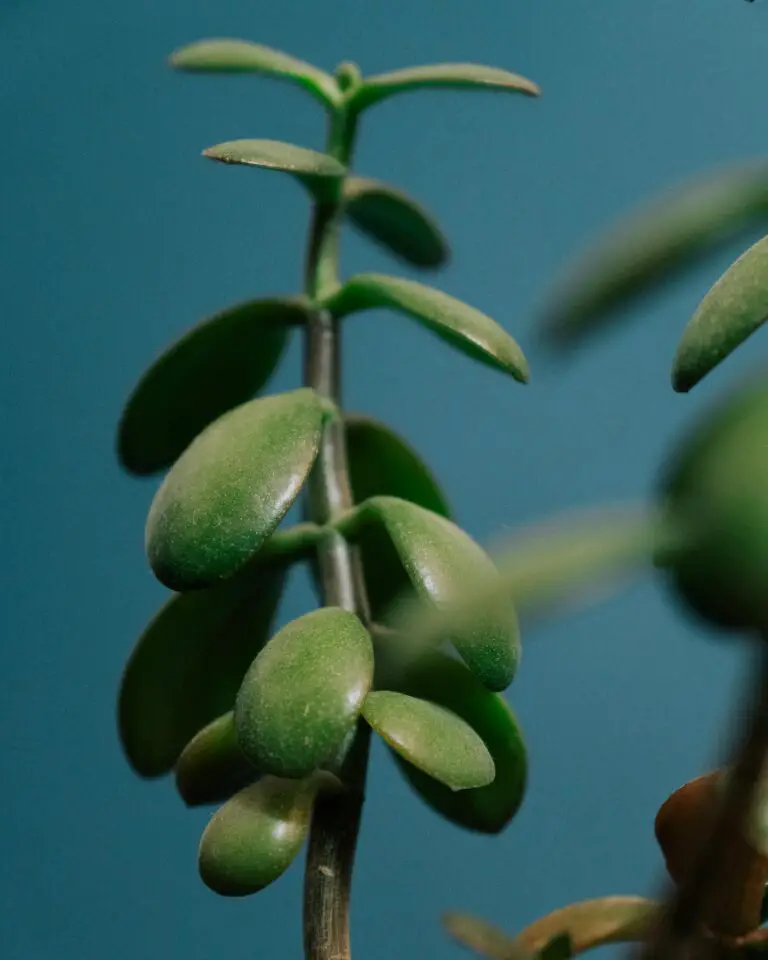
The Living Room: A Lush Welcome
The living room, the first handshake of your home, offers up a tabletop or a vacant windowsill yearning for some succulent company. Imagine a Crassula ovata, commonly known as Jade plant, perched grandly on your coffee table, its glossy jade-green leaves catching the soft afternoon light. Or picture a cluster of Crassula plants, in a variety of shapes and textures, on a chic floating shelf, bringing in a burst of life against a stark white wall. Their very presence emits tranquility and a refreshing vibrancy.
Bookshelves & Office Desks: Greenifying Your Workspace
Why should your office desk be a mere landscape of papers and gadgets? Adding a small Crassula adds not just a spark of green, but also a silent reminder of growth and vitality amidst your busy work hours. A Jade plant near your desktop can be a calming presence, a touch of nature that cleanses the air and your thoughts with equal measure.
The Bedroom: Subtle Beauty on the Nightstand
Bedrooms are sanctuaries, and what better way to imbue peaceful greenery than with a petite Jade plant or a Crassula baby? It’s not just about aesthetics; these plants can enhance the quality of your sleep by purifying the air. As they respire throughout the night, they gently take in carbon dioxide and release fresh oxygen, encouraging a restful slumber.
Bathroom Bliss: Spa-Like Ambiance
Even your bathroom can tap into the Crassula and Jade plant magic. A small pot on the windowsill or next to the sink can endure the high humidity and warmth of this space while adding to the spa-like feel of your personal pampering zone. They thrive with the steam from your showers, making it a hassle-free choice for a room often forgotten in the decorating process.
The Crassula and Jade plant are not mere decorative elements. They are living sculptures that offer a harmonious blend of form, texture, and color. With their minimalist water needs and sturdy nature, they are the perfect candidates to adorn your dwelling with a touch of earthy elegance. Whether it’s a contemporary living space or a cozy cottage nook, these succulent buddies will seamlessly integrate and lift the vibes of your home.
FAQs: Questions Gardeners Ask About Crassula and Jade Plants
Welcome to the curiosity corner where green thumbs and succulent enthusiasts alike gather to untangle the mysteries of Crassula and Jade Plants! Whether you’re debating which leafy friend to adopt or just seeking some succulent wisdom, you’ve come to the right place. Let’s dive into your most pressing questions with real-life examples sprinkled in for good measure.
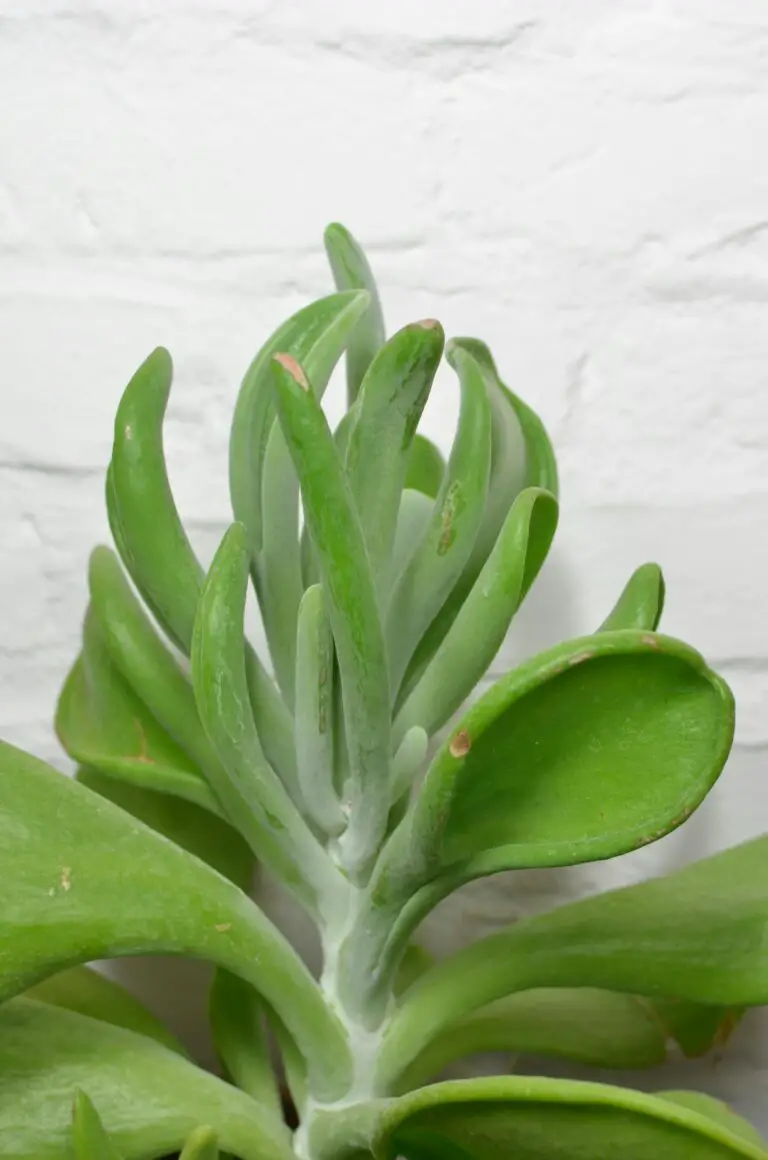
Are Crassula and Jade Plants the Same Thing?
Hear this story often? A friend proudly shows you their “Jade Plant,” only to have another chime in, “No, that’s a Crassula!” Confusion reigns until someone pulls out a smartphone to consult the almighty internet. In fact, it’s not so black and white. While many use the names interchangeably, not every Crassula is a Jade Plant, but every Jade Plant (Crassula ovata) is indeed a member of the Crassula family. Remember, it’s like squares and rectangles!
How Can I Tell Them Apart?
Let’s set the scene: you’re walking through your favorite botanical garden, and two succulents catch your eye. One is labeled “Crassula,” the other “Jade.” Upon closer inspection, you might notice the Jade Plant typically displays thicker, rounder leaves with a glossy sheen, often with a touch of red on the edges, giving them a distinctive look. Other Crassulas may have thinner, pointier leaves, and they come in a wider variety of shapes and sizes!
Do They Require Different Care?
Imagine two neighbors, both proud owners of Crassula and Jade Plants. One talks your ear off about the meticulous care routine for their Crassula varieties, from the argentea to the muscosa. The other, however, boasts about the “set it and forget it” nature of their robust Jade Plant. Indeed, while both plants thrive on neglect—loving bright, indirect sunlight and infrequent waterings—some finicky Crassula species may call for a bit more attention and pampering. It’s always a good idea to read up on the specific needs of your succulent sidekick!
Will They Bloom in the Same Way?
You’re at a local plant swap, and a seasoned gardener shares a tale of their Crassula ‘Buddha’s Temple’ blooming with clusters of tiny, star-like flowers. Will your Jade Plant do the same? Possibly! With enough sunlight and a little luck, your Jade Plant might surprise you with white or pink starry flowers. However, blooming habits can vary significantly among Crassula varieties, so while some may regularly produce flowers, others rarely do. It’s like a botanical lottery—exciting, right?
Can I Propagate Them Similarly?
Last summer, you witnessed a friend’s Jade Plant propagation experiment: tiny leaf cuttings placed on moist soil, transforming into miniature Jade wonders. Wondering if it’s the same story for other Crassulas? Absolutely! Most Crassulas will happily take root from leaf or stem cuttings, making propagation a cinch. It’s a fun project that can fill your home with little green offspring, a true testament to the resilience and adaptability of these succulent marvels.
Armed with these insights, you are now better equipped to appreciate the subtle and not-so-subtle nuances between Crassula and Jade Plants. Whether out shopping for a new potted pal or nurturing your current collection, remember the joy is in the journey of growing and learning. So go on, flaunt your newfound knowledge and watch your succulent garden thrive!
